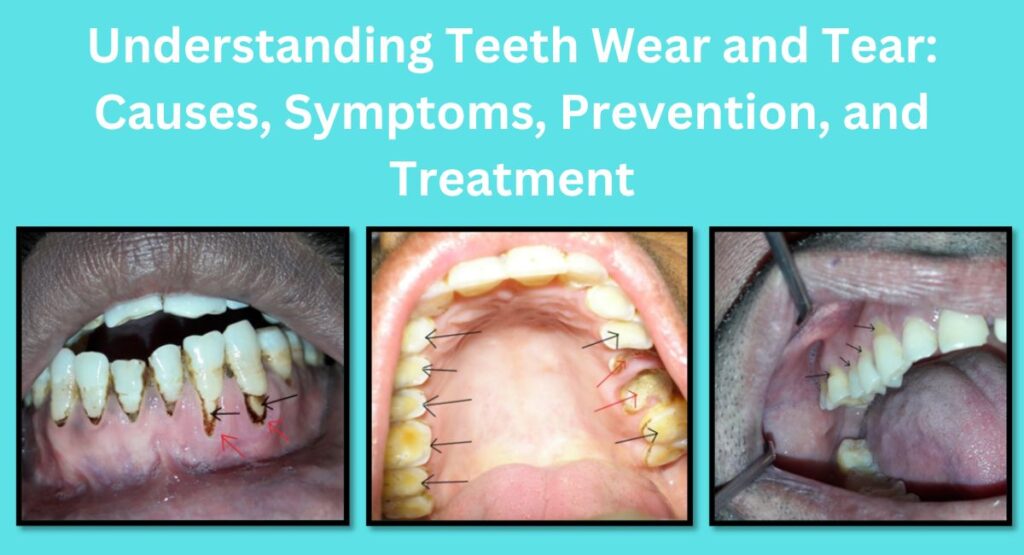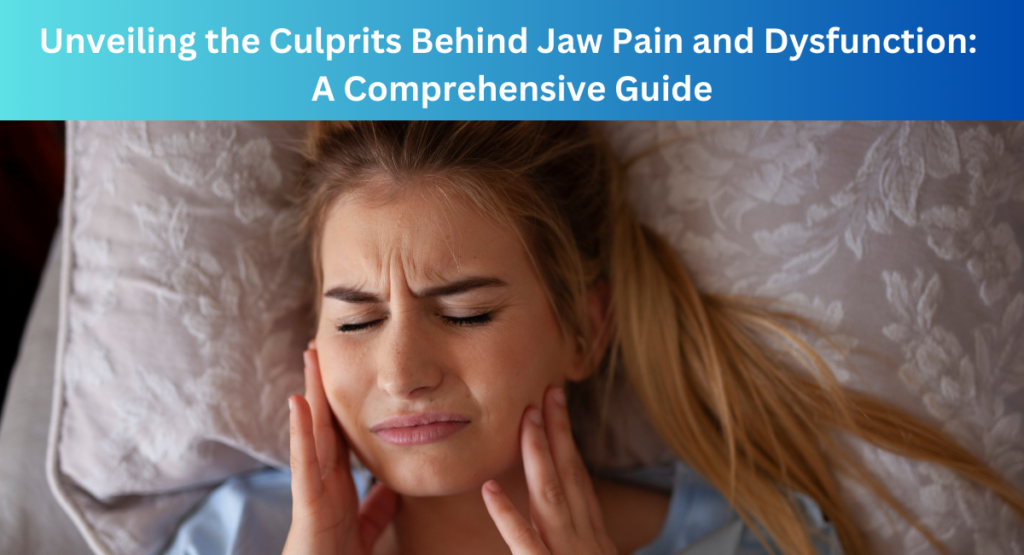Teeth-Brushing is critical for your oral as well as overall health and well-being. It also boosts your smile and confidence. Toothbrush is one of the important oral hygiene tools used for brushing your teeth and gums. Though toothbrush design matters, the effective cleaning of your teeth largely depends on the correct brushing technique and consistent good oral hygiene habits. People often prioritize the look and design of their toothbrush, overlook the fact that the right brushing technique plays a major role in achieving healthy smile. Moreover, wrong brushing technique not only compromises oral health but also causes permanent damage to your teeth and gums. In this article, we will explore the correct brushing technique you need to follow to keep your teeth and gums healthy.
This post may contain affiliate links which means we may receive a small commission (at no additional cost to you) for purchases made through links. We include products we think are useful for our readers. Learn more on our Disclaimer page.
Importance of Proper Brushing
Dental plaque, which is a thin film of bacteria that sticks to your teeth and gums and can lead to cavities, gum disease, and bad breath. Improper and haphazard brushing cannot remove plaque effectively. Furthermore, it can cause teeth wear and gum recession. However, correct brushing technique not only remove significant amount of plaque effectively, but also protect your teeth and gums from wear and recession.
Here are the 10 Steps to Brush Your Teeth Properly:
Part -1: Use the Right Tools
- Use the correct toothbrush
A toothbrush with small-head, whether manual or electric, and with multi-level or angled soft nylon bristles is the right choice as it can reach all areas of your mouth and remove plaque effectively without damaging your teeth and gums.
For people with limited mobility or dexterity issues, electric toothbrushes can be a more convenient option. Furthermore, electric toothbrushes make it easier to apply the correct amount of pressure while brushing, which can benefit those who habitually brush too hard. This helps reduce the mechanical pressure on teeth and can stimulate gums. However, according to the American Dental Association (ADA), both electric and manual toothbrushes can be effectively removing oral plaque when used properly.
Manual extra soft bristled toothbrush
Manual extra soft toothbrush for kids
Manual soft toothbrush for adults
Manual soft toothbrush for kids
Electric toothbrush for adults
Electric toothbrush for kids
- Use Fluoride toothpaste with Low RDA
Always use toothpaste approved by your country’s dental association with a relative dentin abrasivity (RDA) score of 250 or less. Fluoride toothpaste is a highly recommended choice as fluoride strengthens your teeth, prevents and remove plaque build-up, and reduces the risk of tooth decay and gum disease. It also aids in repairing tooth enamel damaged by decay or erosion. Remember, ingesting too much fluoride can have serious health consequences. Therefore, fluoride should not be swallowed, and it is important to note that it is not recommended for children under the age of three years.
Fluoride toothpaste for adults
Fluoride toothpaste for kids
- Replace your toothbrush regularly
It is recommended to replace your toothbrush every three to four months or sooner if the bristles are frayed or if you used it when you were sick. Frayed bristles are unable to remove plaque effectively, especially from hard-to-reach areas between teeth and fissures on top surfaces. The brushing with a worn toothbrush can also lead to teeth abrasion and gum recession. Therefore, replacing your toothbrush on time can help maintain good oral health.
Part – 2: Mastering the Brushing Technique
- When to brush
Remember to brush your teeth at least twice a day. Most dentist recommended that you brush at least twice a day, once in the morning and once before going to bed, and at least for two minutes each time. Ideally, you should brush after every meal, so it’s best to avoid snacking between meals as much as possible to prevent plaque build-up.
- Use a small amount of toothpaste
Take only a pea-sized amount of toothpaste onto your toothbrush. Applying excessive amount of toothpaste may result in producing too much foam, which can tempt you to spit and finish your cleaning too early. Furthermore, it increases the risk of ingesting more fluoride, which can be detrimental to your health.
- Gently Brush Your Teeth
The ultimate goal of brushing should be optimal cleaning of the teeth while avoiding any damage to the teeth or gums. Brushing your teeth with an excessive force, using long back and forth strokes, and keeping the bristles at 90-degrees on flat surfaces can cause teeth abrasion and gum recession. This can result in tooth sensitivity on taking hot or cold drinks, and also leave tooth susceptible to decay or erosion. Therefore, it is crucial to use a gentle brushing technique with a soft-bristled toothbrush and low relative dentin abrasivity (RDA) toothpaste to maintain good oral health.
- To clean the outer and inner surfaces, areas below the gumline, and spaces between teeth
- Set bristles at a 45-degree angle to the gum line. To effectively clean the outer and inner surfaces of all teeth, as well as below the gumline, it is recommended to position the bristles of your toothbrush at a 45-degree angle to your gums as show in image.
- For upper teeth, the bristles should be swept downwards, while for the lower teeth, the bristles should be swept upward. This technique also helps to optimally clean the areas between the teeth.
- If you are unable to place the toothbrush at a 45-degree angle to clean the inner surfaces of your front teeth, then you can place the brush vertically and make up-and-down sweeping strokes using the first half of the brush.
- To clean the back of your last teeth, gently position the toothbrush and make short back-and-forth strokes with an upward sweeping motion for lower teeth and a downward sweeping motion for upper teeth.
- This sweeping action in a downward or upward motion is not only effective in removing plaque from the tooth surfaces and below the gums, but also in preventing the dislodged plaque from getting pushed back between your teeth or below the gum line.
- Once these areas have been thoroughly cleaned using an up-down sweeping motion, you can switch to a short, circular motion to further clean and polish these surfaces.
- To clean top (chewing) surfaces of back teeth
- Place the bristles of your toothbrush at a 90-degree to the top (biting) surfaces of your back teeth.
- Gently press the brush so that the bristles can reach deep into the pits and fissures present on top surfaces.
- Gently brush using short back-and-forth strokes to clean these surfaces.
- Repeat the procedure few times to ensure that all areas are cleaned thoroughly.

Correct Teeth-Brushing Technique
Give equal time on each quadrant
Give equal time on each quadrant of your jaws, around 30 seconds each. You can set a fixed timer near your wash basin in case of manual brushing.
Focus on the hard-to-reach areas
There is no specific rule whether to start brushing the front teeth or the back teeth first. However, to start with the back teeth allows you to focus on hard-to-reach areas in the back of your mouth, where plaque and bacteria are more likely to accumulate. Once you have thoroughly cleaned your back teeth, you can move on to the front teeth. The most important thing is to brush all surfaces of your teeth and gums for at least two minutes, twice a day.
It is important to focus more on common hard-to-reach areas, such as the spaces between your back teeth, the natural pits and fissures on chewing surfaces of your back teeth, and the back of your last teeth. Because, these areas are more prone to accumulating plaque and bacteria, which can lead to tooth decay and gum disease if left unaddressed. Therefore, it is crucial to pay extra attention to these areas while brushing to ensure they are thoroughly cleaned.
- Rinse your toothbrush thoroughly
After using a toothbrush, it is recommended to rinse it thoroughly with water and allow it to air dry in an upright position. If you don’t rinse it properly, you can actually allow old bacteria into your mouth the next time you use it. It’s important to store the toothbrush in a clean, dry place, and keep it away from the toilet to avoid exposure to flushing germs. Avoid sharing your toothbrush with others to prevent the spread of germs.
- Rinse your mouth and gargle your throat
Rinse your mouth and gargle your throat with water after completing your oral hygiene routine to remove any leftover toothpaste and debris. There’s a debate on whether it is advisable to rinse after using fluoride toothpaste. Some argue that it reduces the effectiveness of fluoride, while others are concerned about fluoride ingestion. If you have a high risk of developing cavities, it may be beneficial to avoid rinsing or rinse with a little water to create fluoride mouthwash. However, some studies have shown that rinsing after brushing has no significant impact on the effectiveness of brushing with a fluoride toothpaste. It is always best to consult your dentist if you have any doubts.
Part – 3: Other Important Oral Hygiene Care
Flossing is as important as brushing
Gently floss your teeth at least once a day, especially after dinner before going to bed. Floss is not a substitute for a toothbrush, but it is equally important. It removes plaque from hard-to-reach areas between the teeth where a toothbrush can’t reach. Flossing is as important as brushing, and you should never stop doing it, even if you encounter difficulties. You can use a floss holder, or other flossing aids if you are unable to reach certain areas of your teeth with traditional flossing methods. Flossing not only removes plaque but stimulate gums, and help reduce inflammation in the area. It is recommended to use floss before brushing your teeth so that any plaque particles that becomes loose during flossing doesn’t remain in your mouth. However, the most important thing is to floss and brush regularly, regardless of the order.
Dental floss
Dental floss with holder and replaceable head
Clean your tongue gently
It is recommended to gently clean your tongue as part of your routine oral hygiene care. You can use a tongue brush or tongue scraper, or even a toothbrush to gently clean your tongue from back to front to remove any food particles left on your tongue after brushing your teeth. This helps keep bad breath away and prevent plaque build-up on your teeth, which can lead to tooth decay and gum disease. Do it gently, or you’ll damage your tongue. Thus, this simple step improves your oral hygiene and contribute to better overall health.
Stainless steel tongue scraper (close-end)
Tongue brush
Conclusion
It’s not enough to simply brush, but following the correct brushing technique on a regular basis is essential for maintaining good oral health, as well as overall well-being. Proper brushing technique not only clean your teeth and gums effectively, but also preventing teeth wear and gums recession. Mastering the correct brushing technique is simple and easy, and it’s necessary for maintaining good health. All you need is to start early and practice consistently.











